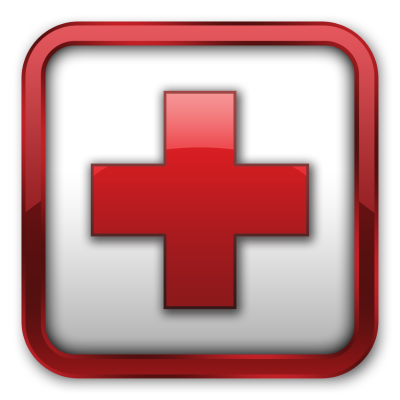An Introduction To First Aid

This first module will introduce you to the basic first aid principles. A knowledge of basic first aid can make the difference between life and death.
Several studies have shown that effective first aid can be vital in the first few minutes after an emergency. There are plentiful success stories in the media about first aid saving lives.
This module will go through what first aid is, why first aid is important and some of the basic procedures There is written, audio and video included in this module for you to download and take with you for later.
At the end of this module there will be a test to see how well you did...Good Luck!
Important: To get the most out of this first aid course please do not skip ahead. Everything in this course is designed to walk you through the learning process. From understanding your responsibilities and limitations, to what supplies you need and how to use them.
Course Information:
Module 1: Introduction
Video Time: 12:42
This video explains the 3 P’s, first responder responsibility's why first aid is important and what you can expect from module 1 of the first aid course.
Some Basic First Aid Information
What is first Aid - The Aims of First Aid - First Responders
First Aid, & Why Learn It?
This first module will introduce you to the basic first aid principles. But firstly let’s answer the question, why learn first aid? A knowledge of basic first aid can make the difference between life and death.
In most situations, it is often the job of a Certified First Aid Provider to assist in stabilizing an injured or ill person until professional medical help arrives. Even if you are not certified, or find yourself in a situation where there is no help, with proper education you could be the difference between someone living and dying.
Several studies have shown that effective first aid can be vital in the first few minutes after an emergency. There are plentiful success stories in the media about first aid saving lives.
The "Good Samaritan" law offer legal protection to people who give reasonable assistance to those who are injured. Make sure and check the laws in your area and read more about the Good Samaritan law here. Also, first aid is an important life skill.
There are many situations that come up in our daily lives that might require some minor first aid, or even more severe injuries that require attention until you are able to get help.
The Aims of First Aid
There are three main aims of first aid, these aims are known as the ‘three Ps’ of first aid.
Preserve life: Your first aim is to preserve life by carrying out emergency first aid procedures. For example, CPR or, opening an airway or stopping bleeding are emergency procedures.
Prevent deterioration or further injury: You should attempt to prevent the casualty’s condition from deteriorating further. This could include preventing movement because of possible head injuries or fractures.
Promote recovery: Finally, you can promote recovery by arranging prompt emergency medical help. In addition, simple first aid can significantly affect the long-term recovery of an injury. For example, quickly cooling a burn will reduce the risk of long term scarring.
First Responder Responsibilitys
Let’s say you are driving and happen on a car accident. In the beginning, things are chaotic at the scene of a crash. There may be injuries, there may be blood and there will be danger surrounding you. What should you do if you are the first one on the scene?
Always think of your own safety first. Park your car well off the roadway. This might seem obvious, but it is really important for your safety to park far enough away and give other drivers time to react before getting to the crash.
Once safely parked, take a few moments to gather yourself. In a situation like this your body will be dealing with an adrenaline dump. Taking those few extra moments to collect yourself before acting will make you much more effective. If you have the option, call 911. Tell the dispatcher where you are and what you can see.
Look around see what kind of secondary threats there are. Are you off the road far enough and have you left room for emergency vehicles to respond? Is there a fire? Are there electrical wires down in the area? What is oncoming traffic doing?
Next look for injured victims and know your own first aid capabilities. Do not attempt any first aid or medical procedures beyond your training. If you have not had a first aid or CPR class, you can at least check on the victims and let them know that help is on the way.
In a calm reassuring voice talk to the victim and tell them not to move. Do this even if the victim is unconscious, they might still be able to hear you. Scared, injured, terrified victims are comforted just knowing they are not alone.
Do not try to move any crash victims unless there is a greater life-threatening hazard, like fire, that necessitates you moving that person.
If you are in a post collapse situation where help is not an option, or the victim is in immediate danger, you will need take action with some of the things you will learn in this course.
Think about the following questions:
 Imagine you came across this situation...
Imagine you came across this situation...
What would your first action be?
What dangers could there be in this situation?
How would you manage these dangers?
Which other emergency services would be required?
Training & Resources
The American Red Cross offers a wide variety of classes that meet your needs. Select from a range of courses, including First Aid, CPR and AED training.
Get Started...
Click the button to start module 2 of the first aid course and learn what first aid supplies you might need.
Course Home
Click the button to return to the main course page with the list of all the modules in the first aid course.
DISCLAIMER: THIS WEBSITE DOES NOT PROVIDE MEDICAL ADVICE
The information, including but not limited to, text, graphics, images and other material contained on this website are for informational purposes only. The purpose of this website is to promote broad consumer understanding and knowledge of various health topics. It is not intended to be a substitute for professional medical advice, diagnosis or treatment. Always seek the advice of your physician or other qualified health care provider with any questions you may have regarding a medical condition or treatment and before undertaking a new health care regimen, and never disregard professional medical advice or delay in seeking it because of something you have read on this website.








